Array Type Comparison
An effort to rate array types, of similar wattage, as to the overall height, mechanical complexity and programming complexity. To give a sense of the array height, I have stacked a stick figure of a 72 inch man, 2 or 3 times. Array height is important, because of wind loading.
The three types of array movements are 1.) One similar to the sun's motion. 2.) One where the axis are azimuth and elevation. and 3.) One where one axis of motion is east-west, and the other is north-south. 4.) 1 axis, 1000 watt array
I. The axis of rotation is similar to the earth's rotation.
The 2 axis are 1.) time-of-day, and 2.) time-of-year. The programming is very simple. One axis of rotation is parallel to the earth's axis. So the programming is the time of day. The other axis is the earth's declination. There is a simple equation for this. It is from a website "powerfromthesun.net", Chapter 3. The equation is Sine(Declination) = 0.398 Cosine(.098562( N-173)). where N is the day of the year. The actual angle of the array at noon, from the horizontal, is the latitude +/- the declination. For example, in Houston, at the summer solstice, the sun is 30 (latitude) - 23(declonation) = 7 degrees from being overhead.
Of the 3 types of arrays compared, the height of this one is the highest. I would say the mechanical complexity is medium. The programming of the motion is simple.
----------------------------------------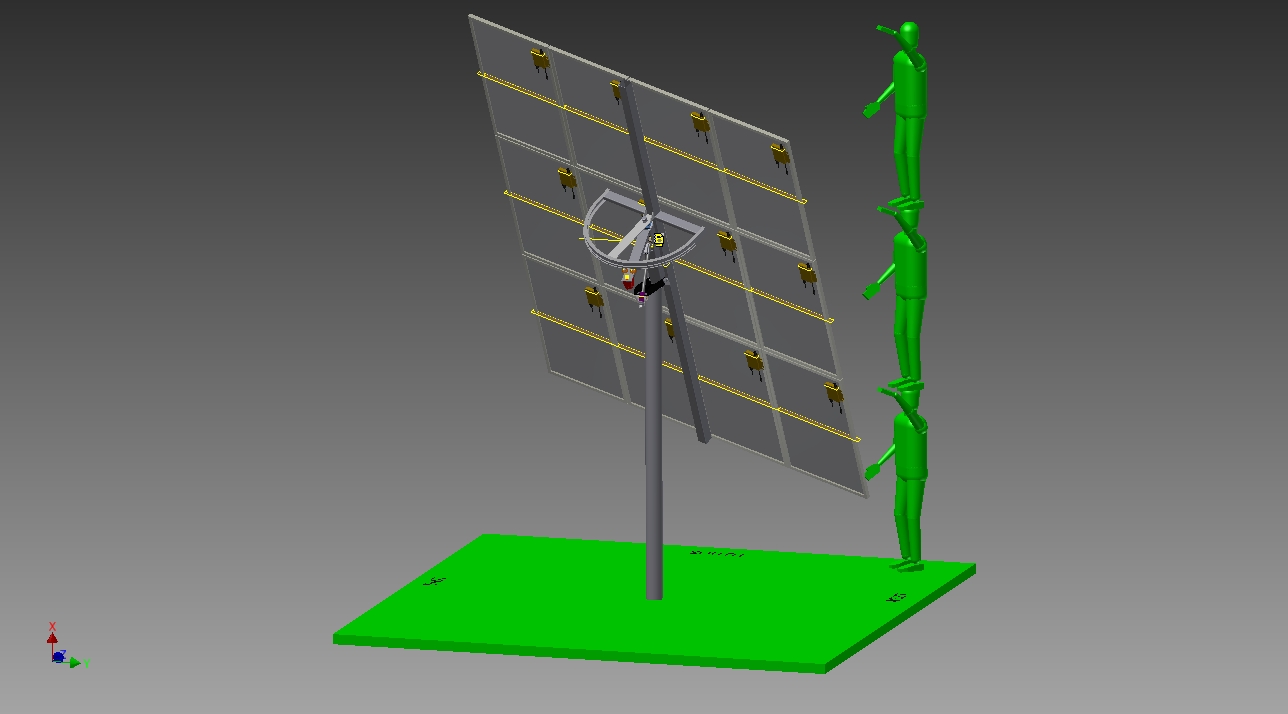 --231 inch high = 5.9 meters high------------
--231 inch high = 5.9 meters high------------
II. This axis of rotation is azimuth and elevation.
The programming is more complex. The input variables are latitude and longitude, and time. The calculations determine the sun's azimuth and elevation. Motors move the array accordingly. With the current motors, the time to re-orient the array horizontally, in case of a gust of wind, is slow. Not good. I would say the mechanical complexity is high.
-----------------------------------------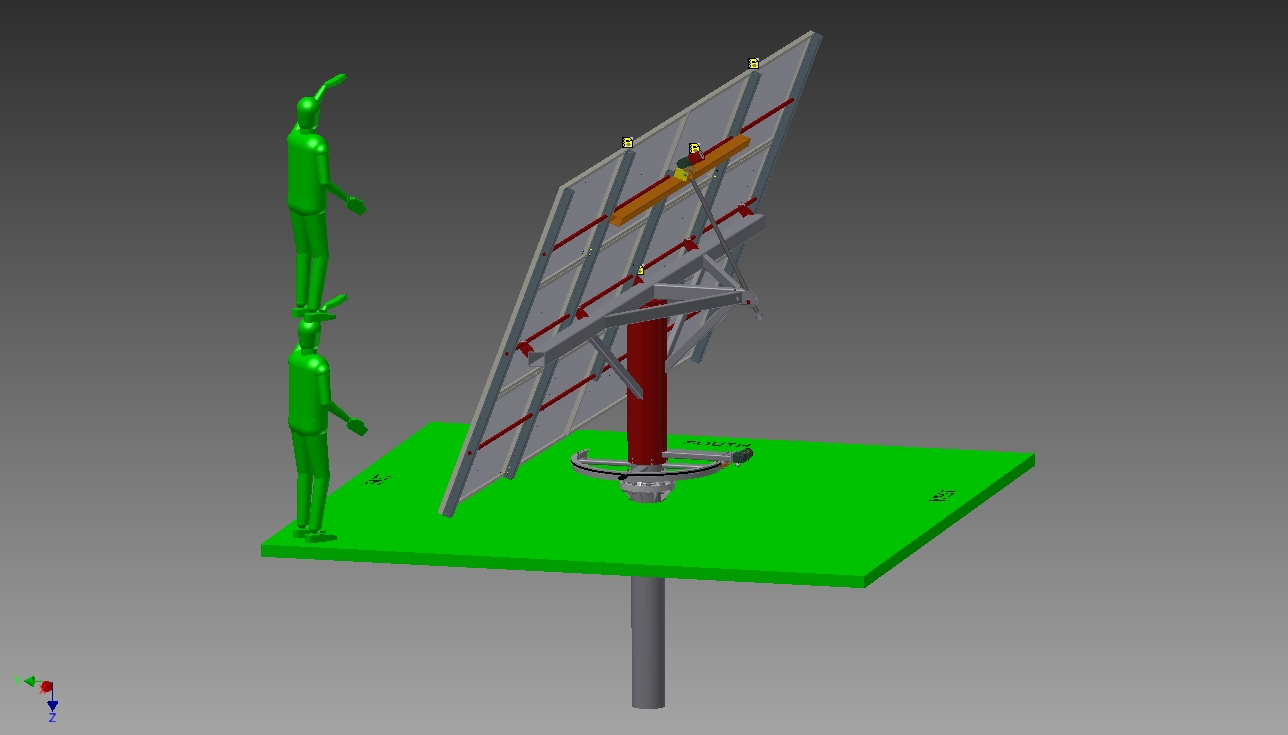 --127 inch high = 3.2 meters high----------
--127 inch high = 3.2 meters high----------
III. The daily axis of rotation is left to right. The seasonal axis are the 4 bars, upon which the panels are connected.
In this example, the input variables are latitude and longitude, and time. The calculations determine the sun's azimuth and elevation. But then, there is an axis transformation to change from Azimuth and Elevation to the new set of axis, which could be loosely called the daily axis, and seasonal axis. I would say the mechanical complexity is low. Fewer distinct parts, but more of them. On this design, one axis can be manual, to save money.
-------------------------------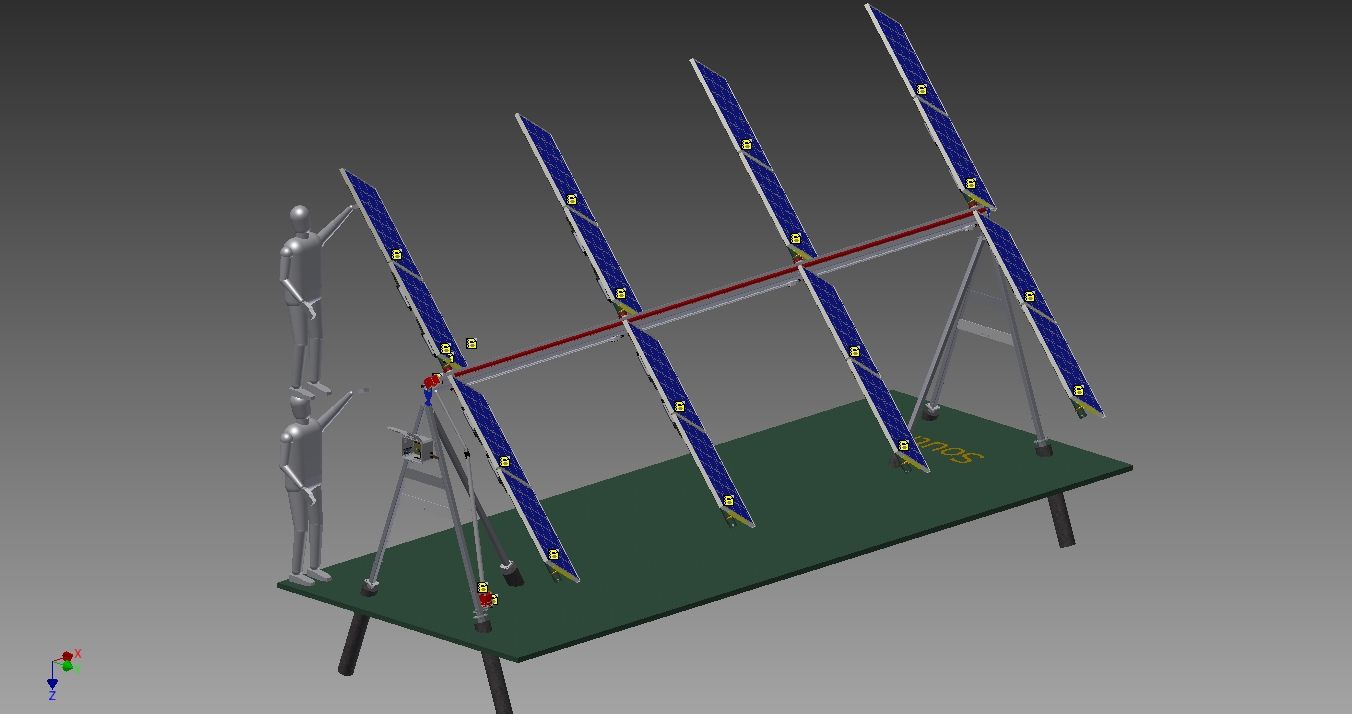 ---165 inch = 4.2 meters high----------------------
---165 inch = 4.2 meters high----------------------
IV. I prefer a single axis, 1000 watt tracker, because the installation is easy, and the wind loads are small. See Solar Farms.
---------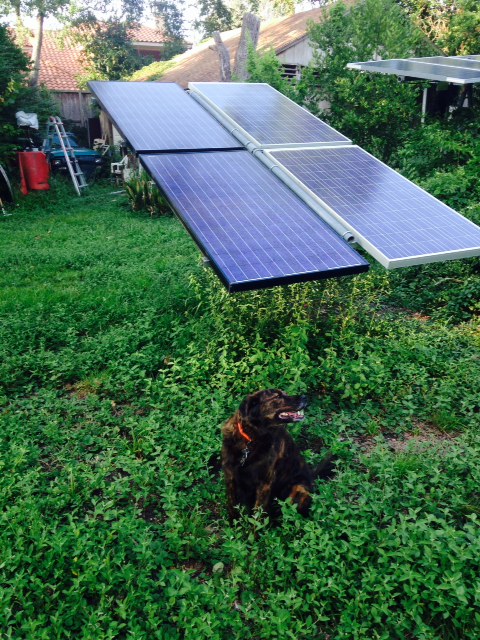 __________-
__________-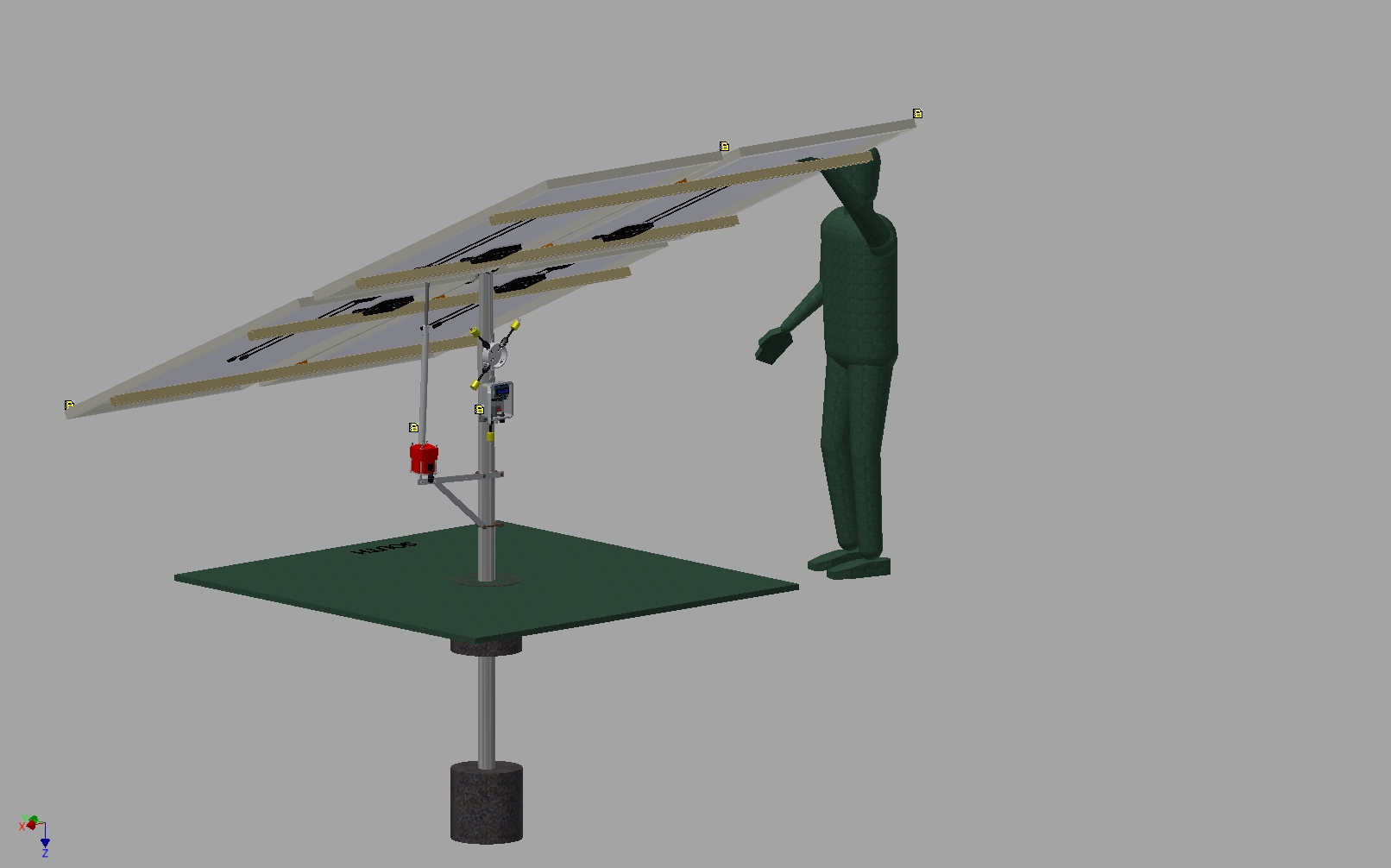
 --231 inch high = 5.9 meters high------------
--231 inch high = 5.9 meters high------------ --231 inch high = 5.9 meters high------------
--231 inch high = 5.9 meters high------------ --127 inch high = 3.2 meters high----------
--127 inch high = 3.2 meters high---------- ---165 inch = 4.2 meters high----------------------
---165 inch = 4.2 meters high----------------------__________-
